If you are using an Windows PC and want to access Bet Angel via a VPS, a Virtual private server, then you will need to go through the following steps to connect to your VPS.
Connecting to a remote server
A virtual private server, or a remote server, is a fancy name for a PC which, rather than being on your desktop, is located in a datacentre. The server acts and behaves, in general, like a normal Windows PC and can be used as such.
You can install & run any software on the remote server, just like a local PC. You can also browse the internet and perform other functions on the remote server. Therefore, once connected you can use it just like a normal PC.
There are some differences in terms of the way a remote server is managed, these are different to a normal PC. So it is recommended that, if you have never managed a remote server before, you leave the settings as you see them when you first use the server.
You need some RDP client software
To connect to a remote server, you need some client software to RDP to the server. This sounds complicated but is very simple, it’s just that the technology industry likes to use fancy names to describe simple processes.
To cut through the gobbledygook, you are the using the client software. You will connect to the server, you do this via some RDP software. ‘RDP’ stands for remote desktop protocol and this is the way you receive information from the server.
The way this works is rather clever. Rather than transferring large amounts of data between you are the server, the RDP client just uses image changes it can see on the server, compresses them and sends them to your software for you to see what is happening on the server. This means it looks and feels like you are using the server, but in fact it’s all taking place remotely. When you move your mouse, it moves on the server and so on.
Using the Windows RDP software
There are lots of choices of remote desktop software but your Windows PC actually comes with all you need pre-installed. The quickest way to find it is to click on the WIndows icon on the start menu. You will find this on the bottom left of your screen.
Once you have clicked on it, start typing ‘Remote desktop connection’ and your PC will immediately locate the software for you. This detail in the image for you.
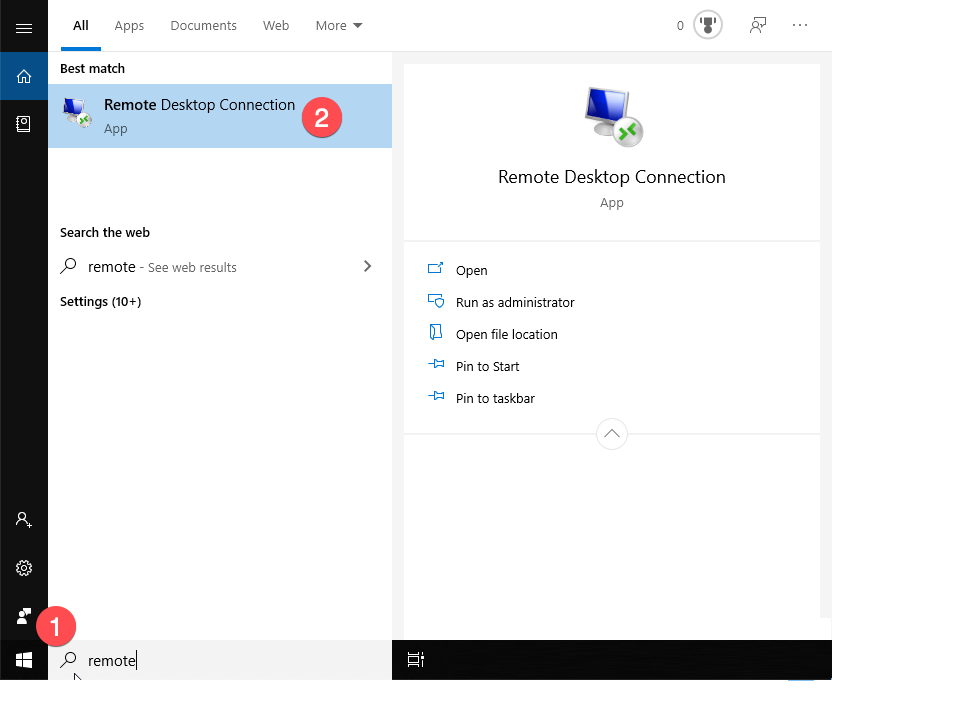
Connecting to your VPS
Once you have located the RDP software you need to connect to your server. Click on the remote desktop app and you will see it asking for your connection details.
Click on the show options drop down menu on the bottom left of this box.
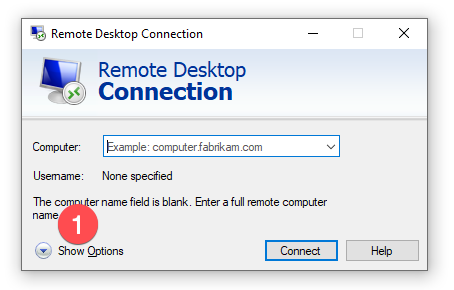
Once you click the drop-down menu the box will expand to give you other options to connect to your VPS. You will need to put the IP address you have been supplied into the ‘Computer’ area on the form, the username ‘Administrator’ into the username area and we suggest you also tick, ‘Allow me to save credentials’.
Once these are completed correctly, just click ‘connect’ to connect to your server.
You are nearly done!
When your local computer starts connecting to the server you will see a dialog box confirming that it is trying to establish a connection to the remote server.
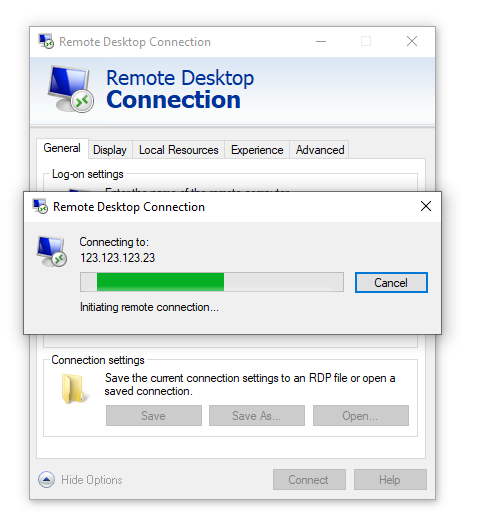
When your computer establishes a connection to the server it will confirm that you are connected and asked you for your password. Your password would have been supplied to you via an email or other means. Enter your password in the appropiate area, we also recommend click on the ‘Remember me’ button, but this optional. Finally click on the OK button.
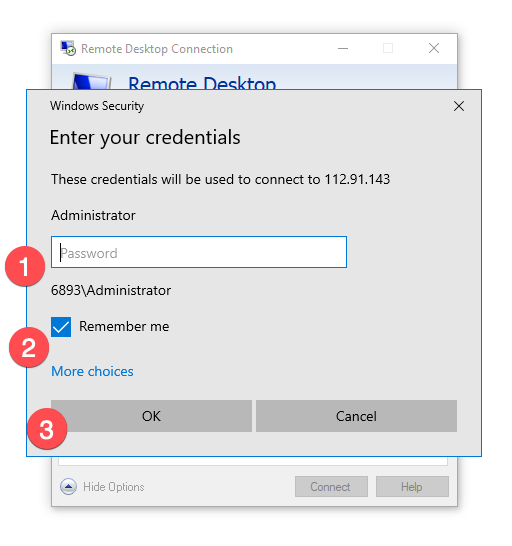
Approving the server certificate
When you connect to a new server you will automatically get a warning message. This looks like a stark warning, but what it is trying to tell you is that it doesn’t recognise your server and is it OK to proceed? So, because its a server under your control, you should tick to accept that it’s ok to connect to that computer in future and click the ‘Yes’ button.
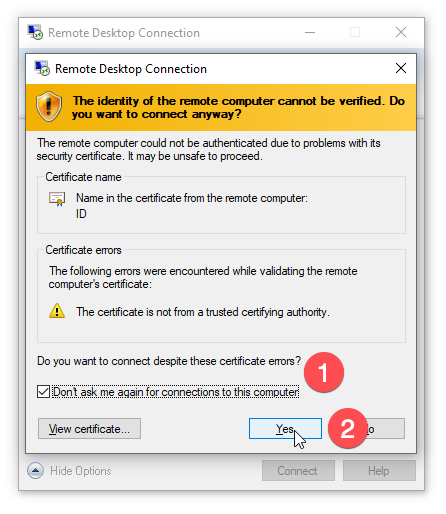
One your have followed these steps, you should now be connected to the server, enjoy!
